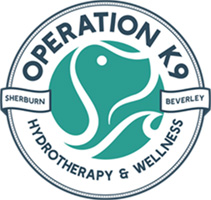
How does massage help your pet?
Massage increases circulation throughout the skin, muscles and joints –helping to bring fresh blood and nutrients to the area, which is needed to keep the bodies tissues healthy, the increase in blood flow helps bring up the tissues temperature, which helps to relax muscles and aid circulation.
Along with helping to bring fluid to the soft tissues massage can influence lymphatic drainage – which removes toxins and waste from the body and helps to stop infection.
When muscles become tight and restricted this has a knock on effect on the rest of the body. It can cause poor mobility, pain and exercise intolerance. By working to release areas of tension and increasing muscle fibre length massage can help improve many aspects of a pets life and create a positive cycle.
Many pets enjoy massage treatment, as it is a calming environment, which can help them to relax, reducing tension, slowing the heart and breath rate, while releasing feel good endorphins.
Who benefits from massage?
Many of the dogs I see are senior pets that are starting to feel the effects of aging. 1 in 5 dog’s has arthritis that can cause discomfort when moving, inflammation in joints and compensatory changes tightening their muscles.
Massage therapy can help to release muscle restriction allowing better mobility in limbs and joints. Along with the physical effects it can be a relaxing experience for older pets, helping to release endorphins and lower pain responses.
Another condition that benefits from massage is dogs with hip and elbow dysplasia, which can cause reduced range of movement and compensatory issues in other areas of the body. Using massage and simple exercises alongside other therapies such as hydrotherapy can help improve muscle tone and target areas of unbalance (such as increased loading going through a limb) improving rehabilitation outcomes.
Many more conditions such as;
- Soft tissue injuries
- Pre & Post surgical cases
- Luxating patella
- Spondylosis
- Stiffness
- Skin issues
- Palliative care
- Sporting and working conditioning
How often should my pet have massage?
Initially I advise 3 treatments around 7-10 days apart. During the 1st treatment we will discuss your pets needs, home environment, exercise and any other information that will help my treatment plan.
At every session I will complete a massage treatment on your pet. Though I believe in giving the dog a choice and will never restrain a patient causing them distress. Most patients accept the treatment, though this can take a little time- I try to make massage appointments a calm and relaxing experience for the dog (& owner!)
Along with the massage treatment, I can advise owners on simple techniques to do at home, exercises that will help with the pets progress and changes that can be made at home to improve their comfort and well being.
‘Treating the whole dog, includes the owner.’
At Yorkshire Canine Massage I believe in working closely with owners to achieve the best possible outcome for their pet. This includes looking at changes they can make at home to enable their pets
to stay independent and mobile (such as putting in ramps and mats). We can also talk about enrichment ideas for pets that aren’t able to exercise like they used to, this can include using food puzzles and training for mental stimulation.
I also like to give clients techniques they can use at home on their pet in-between treatments – these are simple but effective massage techniques thatcan help relax your pet, reduce discomfort and strengthen your bond with your pet! For more active pets there are several ‘functional exercises’ that I can show you that can help with targeting how they move and increase body awareness
Please contact Freya at Yorkshire Canine Massage to discuss your dog’s needs or if
you are unsure whether they would be suitable.
Clinics are available at Operation K9 and home visits also available
https://www.yorkshirecaninemassage.com/







